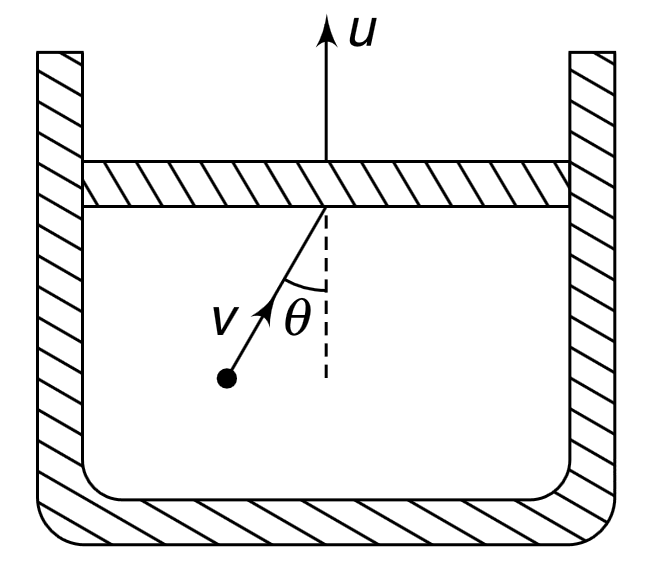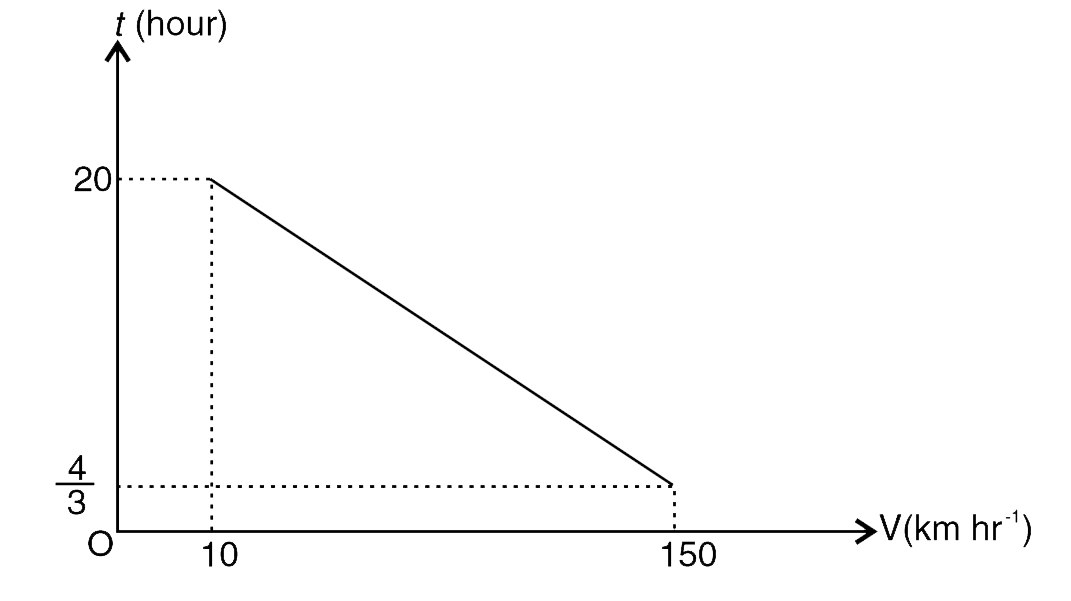A container having volume V contains N atoms of a gas X. 2 N atoms of another gas Y is injected into the container and temperature is raised to T and maintained constant. At this temperature the atoms of X and Y combine to form molecule X2 Y. Find the pressure inside the container after the reaction is completed
The correct Answer is:P=(2NNA)RTV
Step by step video, text & image solution for A container having volume V contains N atoms of a gas X. 2 N atoms of another gas Y is injected into the container and temperature is raised to T and maintained constant. At this temperature the atoms of X and Y combine to form molecule X_(2) Y. Find the pressure inside the container after the reaction is completed by Physics experts to help you in doubts & scoring excellent marks in Class 11 exams.
Topper's Solved these Questions
- BOOK - ARIHANTCHAPTER - KINETIC THEORY OF GASESEXERCISE - Level 218videos
KINETIC THEORY OF GASES
- BOOK - ARIHANTCHAPTER - KINETIC THEORY OF GASESEXERCISE - Level 34videos
KINETIC THEORY OF GASES
- BOOK - ARIHANTCHAPTER - KINEMATICSEXERCISE - Level 333videos
KINEMATICS
- BOOK - ARIHANTCHAPTER - MOMENTUM AND CENTRE OF MASSEXERCISE - Momentum And Center of Mass117videos
MOMENTUM AND CENTRE OF MASS
Similar Questions
The rms speed of molecules of an ideal gas is vrms. Obtain the expression for rms value of relative speed for all pair of molecules in a gas sample.
04:43View SolutionAn ideal gas is inside a cylinder with a piston that can move freely. The walls of the cylinder and piston are non- conducting. The piston is being moved out of the cyl- inder at a constant speed u.
(a) Consider a gas molecule of mass m moving with speed v(>>u). It hits the piston elastically at an angle of incidence q. Calculate the loss in kinetic energy of the molecule.
(b) If the area of piston is A and pressure of the gas is P, calculate the rate of decreases of molecular kinetic energy of the gas sample.
(c) Ifu>> molecular velocities, at what rate will the gas lose its molecular kinetic energy
 01:43View Solution
01:43View SolutionA car manufacturer usually tells a optimum speed (V0) at which the car should be driven to get maximum mileage. In order to find the optimum speed for a new model, an engineer of the car company experimented a lot and finally plotted a graph between the extreme time t (defined as number of hours a tank full of petrol lasts) vs the constant speed V at which car was run.

(a) Calculate the optimum speed V0 for this new model.
(b) If the fuel tank capacity of this car is 50 litre, what maximum mileage can be obtained from this car?06:14View SolutionA particle is acted upon by a force for 1 second whose X component remains constant at Fx=30N but y and z components vary with time as shown in the graph. Calculate the magnitude of change in momentum of the particle in 1 s. What angle does the change in momentum (Δ→P) make with X axis ?
 01:01View Solution
01:01View SolutionAn insulator container contains 4 moles of an ideal diatomic gas at temperature T. Heat Q is supplied to this gas, due to which 2 moles of the gas are dissociated into atoms but temperature of the gas remains constant. Then
View SolutionA container X has volume double that of container Y and both are connected by a thin tube. Both contains same ideal gas. The temperature os X is 200K and that of Y is 400K. If mass of gas in X is m then in Y it will be.
02:50View SolutionA sample contains N moles of a diatomic gas at temperature T. Molecules of gas get dissociated into atoms temperature remaining constant, find change in internal energy of gas
02:47View SolutionNow consider that the above sample of 12 g of Helium, at its final temperature 227∘C, C, is contained in a container X. Another container Y has also Helium at the same temperature and pressure as in container X but container Y has three times the volume of container X. Assuming that Helium in both containers behaves as an ideal gas, answer these questions.
Root mean square speed of the gas molecules in container Y will be -04:22View SolutionTwo containers X and Y are present with container X consisting of some mass of Heat some temperature while container Y having double the volume as that of container X & kept at same temperature containing same mass of H2 gas as the mass of Helium gas. Based on this data & the following conditions answer the question that follows
Assume sizes of H2 molecule & He atom to be same & size of H-atom to behalf to that of He-atom & only bimolecular collisions to be occuring & only bimolecular collissions to be occuring .
Condition I : all except one atom of He are stationary in cont. X & all molecules of H2 are moving in container Y.
Condition II : all except one atom of He are statioanry in cont. X & all molecules of H2 are moving in container Y.
Assuming condition II to be applicable, if temperature only of container Y is doulbed to that of original ( causing dissociation of all H2 gas into H gaseous atoms ) then, it no. of total collisions per unit volume per unit time in container X is A then, no. of 'total collisions made by all molecules per unit volume in container Y would be03:10View SolutionA vessel of volume V contains a mixture of ideal gases at temperature T. The gas mixture contains n1,n2andn3 moles of three gases. Assuming ideal gas system, the pressure of the mixture is
01:44View SolutionA container contains hydrogen gas at pressure P and temperature T. Another identical container contains helium gas at pressure 2P and temperature T//2 . The ratio of the number of molecules of the two gases is
02:05View SolutionAn insulator container contains 4 moles of an ideal diatomic gas at temperature T. Heat Q is supplied to this gas, due to which 2 moles of the gas are dissociated into atoms but temperature of the gas remains constant. Then
04:40View SolutionA container X has volume double that of container Y and both are connected by a thin tube. Both contains same ideal gas. The temperature os X is 200K and that of Y is 400K. If mass of gas in X is m then in Y it will be.
04:22View SolutionAt pressure P and absolute temperature T1 a mass M of an ideal gas fills a closed container of volume (V). An additional mass 2M of the same gas is added into the container and the volume is then reduced to V3 and the temperature to T3. If now the pressure of the gas is nP, then find n.
02:57View SolutionA sample contains N moles of a diatomic gas at temperature T. Molecules of gas get dissociated into atoms temperature remaining constant, find change in internal energy of gas
01:46View Solution

